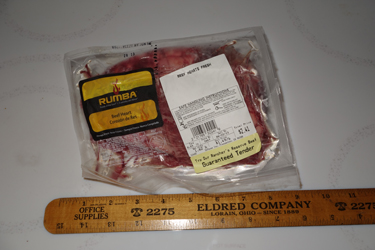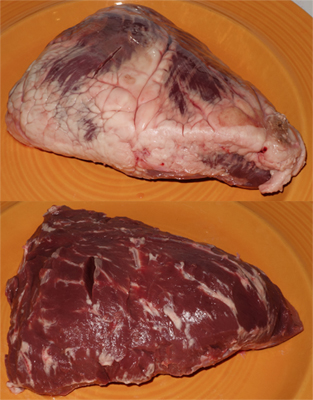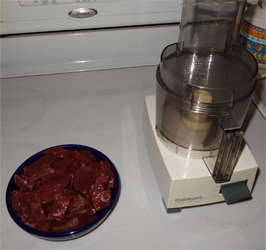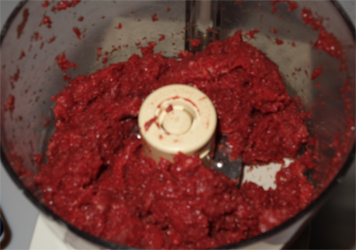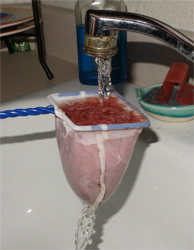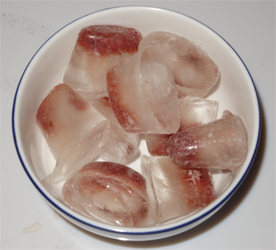 |
For
achieving maximum growth, large size and quality overall health,
beefheart brings dramatic
results- improved size and color- in a relatively short
period of time. Eagerly eaten by most fish,
it is fed no more than 3xs per week to those fish that benefit from a rich, high protein
supplement to their diet, such as the Swords, Jenynsia,
and some of the Goodeids. This is also fed
to fry, and any uneaten food is removed within a couple
hours. It is not fed, for example, to some
of the catfishes, the Ameca splendens, or the
Tangyanikan cichlids that prefer and require a lower
protein, higher vegetable based diet.
In the past,
beefheart has been used for discus and various cichlids, and I
had found it routinely
available. Recently I was in Seattle, and visited
GeilerAquatics after seeing his fish at the
Aquarium Coop fish store in Edmonds, Washington. His
red swords were HUGE! He does many
things with his fish, but feels that his feeding the
beefheart is the single biggest practice he
follows that would explain the success he is having.
This is the same way he prepares his beefheart.
Thanks to Jay and Carol Geiler for reintroducing an
excellent and easy to supply fish food!
|
 |

